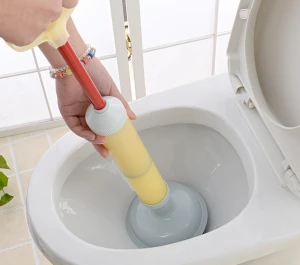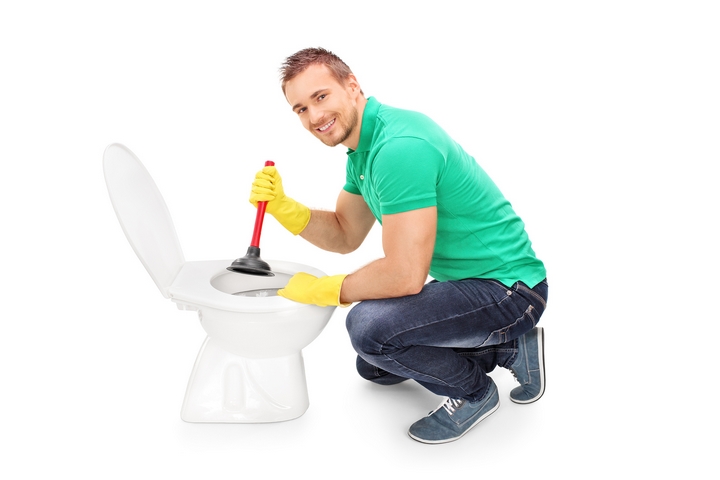Here underneath you might get more worthwhile ideas concerning A Guide to Plungers (and How to Use Them).

Introduction
Proper upkeep of household drains pipes is crucial for stopping blockages and making sure smooth water circulation. Among the trick tools in every home owner's toolkit is the bettor, together with numerous drainpipe cleansers created to tackle persistent clogs successfully. This write-up explores how to utilize plungers and drain cleansers properly to keep your drains flowing openly.
Area 1: Recognizing Plungers
Kinds of Plungers
There are a number of kinds of bettors readily available, each created for different sorts of drains and blocks. One of the most usual types consist of cup plungers, flange bettors, and accordion plungers.
How Plungers Job
Plungers work on the concept of developing pressure and suction to displace clogs. When appropriately used over a drainpipe, they create a vacuum that can pull out debris or separate clogs.
Choosing the Right Bettor
Choosing the ideal bettor depends on the type of drain and the nature of the blockage. Cup bettors are optimal for sinks and tubs, while flange plungers are much better matched for commodes due to their design.
Common Mistakes with Bettors
Preventing these mistakes ensures efficient plunging: improper seal around the drain, not enough force, and unclear bordering particles.
Section 2: Utilizing Plungers Effectively
Prep work
Before diving, guarantee the bettor covers the drain totally and develops a tight seal. Clear any visible particles around the drainpipe opening.
Strategy
Begin with mild plunging movements to develop suction. Rise pressure slowly, using a steady rhythm. Repeat as required up until the drain clears.
Repairing Tips
If diving does not work, try adjusting the seal, using oil jelly for a much better seal, or making use of a different kind of plunger.
Section 3: Understanding Drainpipe Cleaners
Sorts Of Drainpipe Cleaners
Drain cleaners can be chemical or chemical. Chemical cleansers utilize solid chemicals to dissolve clogs, while chemical cleaners use natural enzymes to break down raw material.
Exactly How Drainpipe Cleansers Work
Chemical cleaners react with blockages to liquify them, while enzymatic cleansers break down natural products like hair and grease without hurting pipes.
Security Considerations
Constantly use gloves and eye security when utilizing chemical drainpipe cleansers. Ensure sufficient air flow and follow producer guidelines carefully.
Eco-Friendly Alternatives
Take into consideration making use of vinegar and baking soda or enzyme-based cleansers for green choices that are much safer for pipelines and the atmosphere.
Area 4: Using Drain Cleaning Company Efficiently
Application Methods
Pour chemical cleaners directly into the drain opening. Enable them to work for the suggested time before purging with warm water. Chemical cleaners need to rest over night.
Safety measures
Stay clear of blending different types of cleaners, as this can create poisonous fumes. Never make use of chemical cleaners along with a plunger, as spilling can take place.
Managing Stubborn Blockages
For consistent obstructions, consider making use of a pipes serpent or calling a professional plumber to prevent damage to pipelines.
Verdict
To conclude, comprehending exactly how to utilize plungers and drainpipe cleansers effectively is essential for keeping healthy pipes systems. By selecting the right devices and strategies, property owners can tackle minor blockages and prevent major plumbing problems down the line.
How to Use a Plunger to Unclog a Drain
The humble plunger is a simple yet effective tool for breaking clogs in sinks, tubs and toilets. This handy tool is easy to use. You can make the most of its power if you understand how it works. Ready to dive in? Here’s what you need to know.
Safety First!
Never use a plunger with drain chemicals. Water will splash as you work, and the chemicals can spatter, burning skin and eyes. It’s a good idea to use rubber gloves and wear safety goggles when you work on a clog.
Choose the Right Tool for the Job
Plungers come in two different styles. Sinks, bathtubs and showers require a cup plunger. Like its name suggests, the rubber end is shaped like a cup. Use a flange plunger on toilets. These plungers have a rubber funnel extending from the cup. A plunger needs to be big enough to cover the drain.
Ready, Set, Plunge!
Coat the rim: Coat the plunger rim with petroleum jelly. This helps make a better seal.
Block outlets: Hold a wet rag over nearby outlets such as the overflow vent or the drain in a second sink.
Release air: Insert the plunger at an angle into the water. Water will displace air in the cup. A water-filled cup is more forceful than one filled with air.
Keep the plunger upright: Hold the plunger perpendicular to the drain. Use fast, forceful strokes, but make the first stroke gentle. The first stroke can create a splash if the cup still contains air. Thrust the plunger 15 to 20 times.
Snap off the plunger: The final stroke should be a strong upward motion that ends when the plunger snaps off the drain.
Repeat the process: you may need to repeat this sequence several times. When the water drains away, your work is done. High-five! https://plumbernw.com/blog/how-to-use-a-plunger-to-unclog-a-drain/

Application Methods
Pour chemical cleaners directly into the drain opening. Enable them to work for the suggested time before purging with warm water. Chemical cleaners need to rest over night.
Safety measures
Stay clear of blending different types of cleaners, as this can create poisonous fumes. Never make use of chemical cleaners along with a plunger, as spilling can take place.
Managing Stubborn Blockages
For consistent obstructions, consider making use of a pipes serpent or calling a professional plumber to prevent damage to pipelines.
Verdict
To conclude, comprehending exactly how to utilize plungers and drainpipe cleansers effectively is essential for keeping healthy pipes systems. By selecting the right devices and strategies, property owners can tackle minor blockages and prevent major plumbing problems down the line.
How to Use a Plunger to Unclog a Drain
The humble plunger is a simple yet effective tool for breaking clogs in sinks, tubs and toilets. This handy tool is easy to use. You can make the most of its power if you understand how it works. Ready to dive in? Here’s what you need to know.
Safety First!
Never use a plunger with drain chemicals. Water will splash as you work, and the chemicals can spatter, burning skin and eyes. It’s a good idea to use rubber gloves and wear safety goggles when you work on a clog.
Choose the Right Tool for the Job
Plungers come in two different styles. Sinks, bathtubs and showers require a cup plunger. Like its name suggests, the rubber end is shaped like a cup. Use a flange plunger on toilets. These plungers have a rubber funnel extending from the cup. A plunger needs to be big enough to cover the drain.
Ready, Set, Plunge!
Coat the rim: Coat the plunger rim with petroleum jelly. This helps make a better seal. Block outlets: Hold a wet rag over nearby outlets such as the overflow vent or the drain in a second sink. Release air: Insert the plunger at an angle into the water. Water will displace air in the cup. A water-filled cup is more forceful than one filled with air. Keep the plunger upright: Hold the plunger perpendicular to the drain. Use fast, forceful strokes, but make the first stroke gentle. The first stroke can create a splash if the cup still contains air. Thrust the plunger 15 to 20 times. Snap off the plunger: The final stroke should be a strong upward motion that ends when the plunger snaps off the drain. Repeat the process: you may need to repeat this sequence several times. When the water drains away, your work is done. High-five! https://plumbernw.com/blog/how-to-use-a-plunger-to-unclog-a-drain/

I'm just very involved in and I'm hoping you appreciated my post. Sharing is nice. Who knows, you may be doing someone a favor. I am grateful for being here. Return soon.
Book Your Service